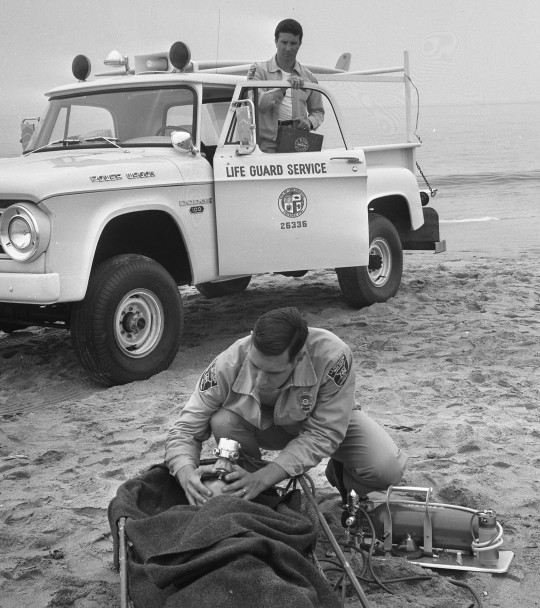#life guards
Explore tagged Tumblr posts
Text

#country house#interior#higginsandcole#england#preppy#life guards#blues and royals#king charles iii#british royal family#royal family#kciii#uniform#men in uniform
129 notes
·
View notes
Text



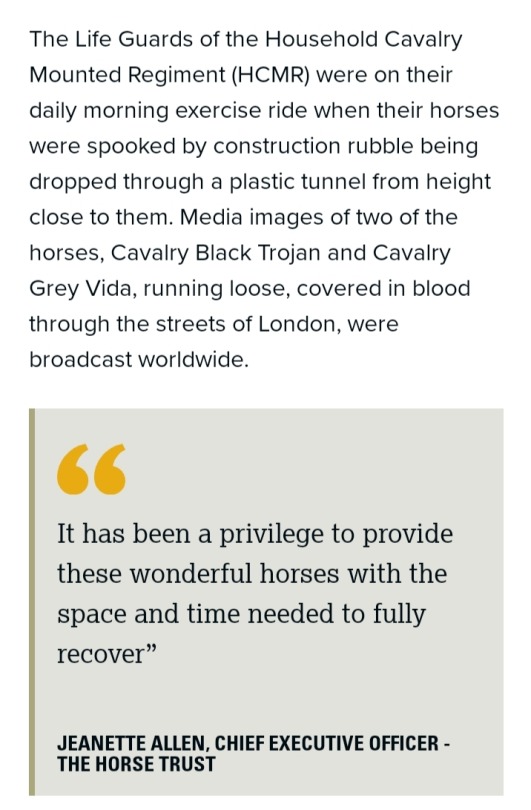






🖤🐴🤍
#Household Cavalry Mounted Regiment#military working horses#horses#The Horse Trust#Life Guards#Cavalry Black Trojan#Cavalry Grey Vida#Hyde Park Barracks#Tennyson#Vanquish#HCMR#veterinary care#reapite care#veterinary surgeon#animal care#animals#cavalry horses
84 notes
·
View notes
Text
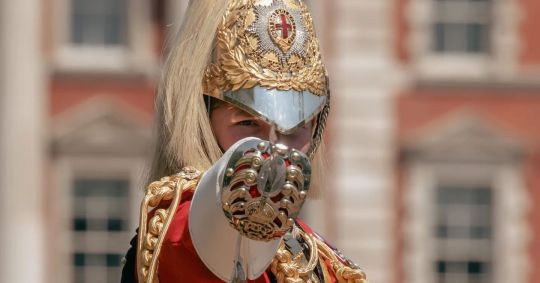
The road to the next duty is the only straight one.
George MacDonald
#macdonald#george macdonald#quote#duty#honour#glory#sword#life guards#regiment#household cavalry#cavalry#soldier#british army
95 notes
·
View notes
Text

Maui, Hawaii. July 2024.
ISO 100 | 37mm | f/4.5 | 1/400 sec
Photo © 2024 Brian R. Fitzgerald (www.brfphoto.com)
#brfphoto#photography#photographers on tumblr#original photography#lensblr#luxlit#biutifulpics#imiging#clubimiging#telescopical#gray-card#galeriedesartsvisuels#originalphotographers#maui#hawaii#lifeguards#life guards#beach
7 notes
·
View notes
Text

A mounted cavalry draft of the 1st Life Guards with Captain Gerrard Leigh in the foreground.
16 notes
·
View notes
Text
Oh to be a fluffy haired white boy in a white polo
10 notes
·
View notes
Text

Ella-Elizabeth has moved out to sulani to pursue her dream of becoming a bay watch life guard good bye sweet girl
#100 baby#sims 4 100 baby challenge#100 baby challenge#the sims 4#sulani#swimming#life guards#bay watch
4 notes
·
View notes
Photo
William Yang: Life Guards, Australia . (1981)
William Yang
William Yang (nascido em 1943) é um fotógrafo de história social australiano , dramaturgo, artista e cineasta que vive na Austrália. Nascido em Dimbulah , North Queensland, ele é um australiano chinês de terceira geração . As fotografias e performances de Yang abrangem mais de 50 anos e documentam o crescimento e a influência desconhecidos da subcultura gay de Sydney, desde a década de 1970 até a epidemia de HIV/AIDS das décadas de 1980 e 1990 e além. Por meio da mídia da fotografia e da performance, Yang também explora sua própria etnia como australiano chinês e a intersecção de sua origem étnica e sexualidade.
Carreira
Yang estudou arquitetura na Universidade de Queensland, onde seu interesse pela fotografia tomou forma. Fotos de detalhes arquitetônicos, performance teatral e pessoas se tornaram o conteúdo que mais tarde definiu seu trabalho, particularmente performance e pessoas.
Início de carreira
No final da década de 1960, Yang mudou-se de Brisbane para Sydney, abandonou os estudos de arquitetura e juntou-se a uma companhia de teatro experimental, Performance Syndicate, como dramaturgo. No início da década de 1970, inspirado pelos motins de Stonewall em Nova York, Yang assumiu-se gay. No entanto, a fotografia tornou-se o seu ofício em vez da escrita e os atores estavam ansiosos por incluir os seus retratos fotográficos nos seus portfólios. Enquanto as celebridades e a moda fascinavam Yang, o fotojornalismo começou a preocupar o seu interesse.
A direção do fotojornalismo o levou a encomendas com revistas famintas por imagens para preencher suas páginas sociais. Embora isso pagasse a vida, Yang se considerava mais um artista do que um fotógrafo comercial. Ao mesmo tempo, a fotografia era cada vez mais reconhecida como uma forma de arte, sua importância reforçada em Sydney com a abertura do Australian Centre for Photography (ACP) em novembro de 1974. Sua primeira exposição no ACP foi em 1977, Sydneyphiles, consistindo de fotos sociais de celebridades e (mais controversas na época) imagens da comunidade gay.
Yang ficou cada vez mais envolvido em documentar a subcultura gay em torno da Oxford Street em Sydney e deixou de ganhar a vida com revistas comerciais para ganhar comissões da imprensa gay. A trajetória da cultura gay nessa época era visivelmente exuberante: o Gay Mardi Gras (mais tarde o Sydney Gay and Lesbian Mardi Gras ) uma marca registrada dessa autoafirmação; o crescente ativismo político em torno dos direitos civis; e a devastação da epidemia de HIV/AIDS (vírus da imunodeficiência humana/síndrome da imunodeficiência adquirida) foram todos capturados por Yang.
Yang diz sobre esta época que havia um ambiente de festa quase frenético, especialmente evidente nos grandes RAT e Sleaze Balls, que desmentiam um sentimento de fatalismo com a epidemia de HIV/AIDS. Yang disse sobre esta época:
Vejo-me como uma testemunha fotográfica do nosso tempo. Sinto-me compelido a realizar estas apresentações de slides como rituais sociais para me aliviar das coisas que vi .
Meio de carreira
A documentação da comunidade gay colocou em foco sua etnia pouco explorada como um australiano chinês . Abra��ando sua etnia e herança chinesa pela primeira vez, Yang teve aulas de taoísmo , viajou para a China e depois voltou para sua cidade natal, Dimbulah , no norte de Queensland. Esse círculo completo expôs Yang à beleza e aceitação da dura paisagem australiana entrelaçada com o reconhecimento e orgulho de sua herança chinesa. The face of Buddha (1989), sua primeira performance artística, incluiu projeções de slides e monólogos com imagens fotográficas sobrescritas e se tornou a forma de expressão que ele preferia às exibições fotográficas puras. Ao sobrescrever suas imagens fotográficas, Yang tornou-se cada vez mais consciente da importância do texto na comunicação e personalização de ideias, de se colocar dentro da história que nunca poderia ser objetiva.
Inspirado pelos monólogos autobiográficos de Spalding Gray , Yang embarcou em uma turnê internacional de sua obra Sadness , um 'monólogo com projeções de slides', que também foi desenvolvido como um filme, ganhando vários prêmios, incluindo o Prêmio AWGIE de 1999 de melhor roteiro e melhor documentário selecionado pelo Australian Film Critics Circle Award. Cada vez mais conhecido por documentários, incluindo My Generation (2008 - histórias de amigos, sexualidade e identidade) Blood Links (1999 - histórias sobre os chineses na Austrália, incluindo sua família) e Friends of Dorothy (1998 - histórias sobre a aceitação da sexualidade, morte e luto) decorrentes de performances originais, Grehan e Scheer afirmam que suas peças performáticas se tornaram uma forma de autorretrato.
Carreira posterior
Na última década, Yang trabalhou em estreita colaboração com a Contemporary Asian Australian Performance (CAAP) e, em colaboração com Annette Shun Wa, tem sido fundamental no apoio a criativos asiático-australianos, incluindo os músicos de hip hop Joal Ma e James Mangohig (entre dois).
Funciona
Tristeza: Um monólogo com slides – começa com a herança chinesa australiana de Yang e é também um relato da morte lenta dos amigos de Yang, Nicolaas e Allan. Sua geração começou quando, entre 1988-1992, Yang percebeu que havia comparecido a mais velórios do que festas.
Existem dois volumes dos diários de Yang que documentam seu trabalho fotográfico - Diários: uma exposição retrospectiva: 25 anos de fotografia social, pessoal e paisagística que se baseia em uma exposição com curadoria da Biblioteca Estadual de NSW em 1998; e Diário de Sydney 1974-1984 que é organizado tematicamente com texto de Yang.
Uma bibliografia abrangente e uma lista das obras de Yang podem ser encontradas em AusLit.
Legado
O arquivo de Yang consiste em mais de meio milhão de imagens que abrangem quase 50 anos de documentação de pessoas, lugares e mudanças sociais.
Grehan e Scheer discutem como o trabalho de Yang pode ser avaliado em uma era de autoestima digital ou 'selfie'. Eles sugerem que o trabalho de Yang reside na 'memória... reflexão e... (auto) reconhecimento'. Grehan e Scheer sustentam que o trabalho de Yang é um antídoto para a produção instantânea da 'selfie' e é uma forma de 'mídia lenta' associada aos documentaristas. Embora Yang também adote mídia digital como Facebook e microblog, ele ainda adere a um senso de curadoria e narrativa. Yang vê sua narrativa digital como um podcast.
A crônica de Yang sobre a epidemia de HIV/AIDS nas décadas de 1980 e 1990, retratando imagens de amigos próximos nos estágios finais da morte, é, de acordo com Helen Ennis, diferente da fotografia post mortem do início do século XIX e XX. Ennis também contrasta seu trabalho exibido publicamente com representações mais recentes de morte e morrer usando tecnologia digital mantida privadamente por entes queridos sobreviventes. Ela afirma que seu trabalho foi feito em uma época em que a urgência em torno da epidemia de HIV/AIDS dentro de um grupo demográfico específico era tanto pessoal quanto política:
O trabalho de Yang foi de vital importância em seu envolvimento matizado e digno com a morte e a morte; combinando fotografias documentais em preto e branco de seus amigos com sua própria narrativa pessoal escrita à mão.
Uma exposição retrospectiva na Queensland Art Gallery em 2021 ( Seeing and Being Seen ) narra os retratos, as festas, a política, o pessoal e o natural.
Prêmios
Prêmio do Festival Internacional de Fotografia de Higashikawa-cho de 1993 de Fotógrafo Internacional do Ano
Prêmio AWGIE de 1999
Prêmio do Círculo de Críticos de Cinema Australiano de 1999

131 notes
·
View notes
Text


His Majesty King Charles III has presented new standards and colours to the Royal Navy, the Household Cavalry Mounted Regiment and Grenadier Guards from the British Army, and the Royal Air Force in Buckingham Palace last week.
As the nation prepares to celebrate the Coronation of His Majesty The King, we dive into the British Army’s contribution to the big day’s pomp and ceremony you may not be familiar with.
Gold Stick in Waiting
A prominent role on 6 May will be played by Lieutenant General Sir Edward Smyth-Osbourne KCVO CBE, Colonel, The Life Guards and Gold Stick in Waiting.
This senior Army officer will ride on the wheels of the Gold State Coach during the Procession from Buckingham Palace to Westminster Abbey.
Gold Stick in Waiting was created because of a conspiracy during the reign of Henry VIII, when the King was supposed to be in danger.
A trusted courtier was ordered to always be by the King’s side, carrying an ebony staff with a gold head.
On the Restoration in 1660, this task fell to the Colonel of The Life Guards.
A second Army officer, Silver Stick, was also placed close to the sovereign as Gold Stick’s deputy to protect the King or Queen from danger.
The role of Gold Stick, now only demonstrated on ceremonial and state occasions, is held jointly by the Colonels of the Life Guards and the Blues and Royals, taking it in turns by monthly rota, both being Regiments of the Household Cavalry of the Household Division.
The Silver Stick is the Commander of the Household Cavalry, who holds the rank of colonel and oversees all Household Cavalry duties for the sovereign.
After the new King has been crowned at Westminster Abbey, the role of Gold Stick in Waiting will be played by The Colonel of The Life Guards, as it is their Sovereign’s Standard on parade.
The Princess Royal will ride on horseback behind the Gold State Coach back to Buckingham Palace as Colonel of the Blues and Royals and senior Colonel of all The Household Division Regiments.
Anointing Screen Bearers
Six members of the Army’s Household Division will carry out the sacred duty of carrying the Anointing Shrine/Screen that will cover and protect the Sovereign and Queen Consort while sacred oils are applied by the Archbishop of Canterbury in Westminster Abbey during the Coronation service.
Colours
All British Army units taking part in the Coronation Procession will proudly carry their Colours, Standards or Guidons.
Infantry Colours are among the most sacred symbols of the British Army. These flags embody the honour, spirit and heritage of the regiments that proudly carry them.
Historically, the practice of carrying Colours, Standards or Guidons served to act as a rallying point for troops in the smoke and fog of battle.
British and Commonwealth infantry regiments usually have two colours, collectively called a stand.
The King's/Queen’s Colour is typically a union flag trimmed with gold fabric and with the regiment's insignia in the centre.
It reminds all ranks of their loyalty and duty to their sovereign.
The Regimental Colour is a flag of a single colour - usually the colour of the regiment's uniform facings (collar, lapels and cuffs) - again trimmed and with the insignia in the centre.
Handmade from precious silks, silver and gilt threads, the Colours are used on the regiment's most important occasions and bear the battle honours, or those inherited from its predecessors, and symbols of the battalions.

Standards and Guidons
In the British Army’s cavalry units, the King’s Cavalry Standard and the Regimental Standard (for the heavy cavalry) and the King’s Cavalry Standard and Regimental Guidons (for the light cavalry) are the equivalents to Infantry Colours.
The two units that make up the Household Cavalry have their own unique Standards.
The Life Guards only carry the King’s Standard, whereas the Blues and Royals carry the King’s Standard and may carry the regimental Guidon.
The Standard is “senior” to a colour or guidon.
In the past, Cavalry would bear Guidons, which are smaller and lighter for carrying into battle on horseback.
In contrast, Infantry, who traditionally fought on foot, have the larger, heavier Colours, which are more easily seen from the ground.
The Sovereign’s Standard of the Life Guards is made of silk damask, with gold thread embroidery and fringe.
It bears the Royal Arms and the battle honours of the Regiment.
Queen’s Truncheon
Proudly marching down The Mall with all other British Army units during the Coronation Procession will be soldiers from The Royal Gurkha Rifles (RGR).
However, unlike their fellow service men and women carrying Colours, Standards and Guidons, the soldiers from Nepal will carry a ceremonial staff, known as the Queen’s Truncheon.
This serves as the equivalent of and is carried as the Regimental Colour.
The staff originates in the Indian Mutiny during 1857-8 when the Sirmoor Battalion (which later became the 2nd KEO Goorkhas, 2 GR) remained loyal to the British Crown.
The Battalion, together with the Guides and the 60th Rifles, held a key position for over three months of constant attack, suffering 327 casualties out of a total strength of 490.
After the mutiny, the 2nd Goorkhas were designated as a Rifle Regiment as a mark of the bond created with the 60th Rifles.
Queen Victoria directed the Battalion be awarded a special truncheon to replace the Regimental Colours that could no longer be carried by a Rifle Regiment.
The ornate Gurkha Truncheon was given to the Rifles by order of Queen Victoria in 1863.
Also known as ‘Nishani Mai’, meaning symbol of the great mother, the Queen’s Truncheon was carried by 2 GR until The Royal Gurkha Rifles were formed in 1994, when it was laid up.
The Queen’s Truncheon remains in service with The RGR and is still accorded the honours due to a Queen’s Colour of Infantry.
The Queen’s Truncheon was also on parade during the 1953 Coronation of Queen Elizabeth II.
This was the first time the Truncheon was presented to the sovereign. It was then presented a further seven times with the last being in 2019.
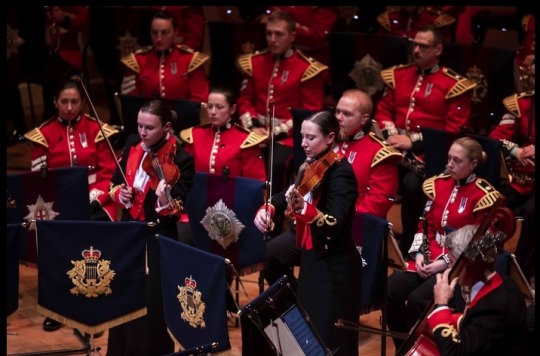
Military music
Bands from the Royal Corps of Army Music will perform on 6 May, with a 50-piece mounted band of musicians from The Band of the Household Cavalry leading the Coronation procession.
Four State Trumpeters from the Band of the Household Cavalry will perform fanfares in Westminster Abbey for the Coronation Service.
The State Trumpeters are professional musicians from the Royal Corps of Army Music and uniquely have to attend military riding school before being selected for a role in which they will have had to memorise up to 22 different fanfares.
Bands from the Foot Guards will be positioned throughout the procession and at key points along the route to keep the procession to time and to entertain the crowds.
During the coronation procession, the British Army Band Colchester will perform as a massed band with British Army Band Sandhurst.
Garrison Sergeant Major Andrew Stokes will be at the side of the Gold State Coach and will have the key role of stepping off the procession from his position in Parliament Square.
He has designed a method of uniting all 19 processional bands to strike up at the same time and maintain a constant beat, whilst playing the same bar, with bands separated by distance across a procession group over a mile long.
Bands from the Royal Corps of Army Music deliver musical support to the Army and across Defence, as well as supporting State ceremonial occasions such as the King’s Coronation.
During the coronavirus pandemic, the Army’s bands helped to raise morale by performing at major national events, including VE and VJ Day, the Queen’s Birthday, national Acts of Remembrance, and New Year’s Eve TV celebrations.
The Royal Corps of Army Music also released free to download music for public enjoyment, online tutorials for aspiring musicians and virtual masterclass workshops for schoolchildren.

#King Charles III#His Majesty The King#Coronation 2023#Coronation Service 2023#Coronation#Coronation Service#British Army#Gold Stick in Waiting#Silver Stick#Coronation Procession#Princess Royal#Infantry Colours#Regimental Colour#Life Guards#Sovereign’s Standard of the Life Guards#The Royal Gurkha Rifles (RGR)#Queen’s Truncheon#Gurkha Truncheon#Queen Victoria#Nishani Mai#Queen Elizabeth II#Royal Corps of Army Music#The Band of the Household Cavalry#State Trumpeters
5 notes
·
View notes
Text

One man in a thousand, Solomon says, Will stick more close than a brother. And it’s worth while seeking him half your days If you find him before the other. Nine hundred and ninety-nine depend On what the world sees in you, But the Thousandth Man will stand your friend With the whole round world agin you.
Rudyard Kipling, The Thousandth Man
#kipling#rudyard kipling#quote#poem#british army#comrade#loyalty#brotherhood#military#horse guards#cavalry#blues & royals#life guards#household cavalry#pall#mall#british monarchy#horses#britain#pageantry
71 notes
·
View notes
Text

9 July 2024, Dublin
1 note
·
View note
Text
thinking about how shawn and gus are definitely the kind of friends that have a secret code word for if either one of them get trapped in a groundhog day time loop scenario
#they let jules in on it when her and shawn start dating#and quite frankly she’s a little offended they didn’t tell her before#they eventually tell lassie too#naturally he thinks it’s ridiculous but also guards the information with his life#psych#shawn spencer#burton guster
2K notes
·
View notes
Text

None of our hands are clean
[First] Prev <–-> Next
#poorly drawn mdzs#mdzs#jin guangshan#mianmian#The secret meaning behind one of the jin members scuttling off is:#I couldn't make three people work out in the remaining panels and per my rule of '3 attempts and take a different approach' he had to go.#Sometimes there are meaningful reasons why something happens in the background. And sometimes it is like this.#Let's just say he saw what was about to happen and got out of there before mianmian started throwing hands.#Okay no more delay. The sheer boldness to call WWX a killer in a room full of people who wear their war body count as a badge...#It's about hypocrisy yes - but it is also about how the narrative shifts on the same action depending on the frame.#Because at the end of the day...the blood on our hands is still blood on our hands.#Both the deaths on the battlefield and the deaths of the Jin's abusing the Wen remnants are still deaths caused by another.#They are also deaths that - depending who holds the frame - are noble acts to protect others.#But it isn't supposed to be about who was right and who was wrong.#It is about the need to be seen as the victim to avoid culpability.#Because if you aren't responsible you don't have to be held accountable. You don't have to grow or change.#If someone takes all the blame then there is no need to reflect on your own faults.#We have to protect our fragile ego from the mirror lest it shatter and we have to remake it anew.#Horrifically enough...even if WWX spared the Jin guards or even never ran into Wen Qing#He wouldn't have been able to escape being the scapegoat. He downfall was set into motion a long time ago.#My goodness...What a deliciously tragic story Wei Wuxian's first life was.
1K notes
·
View notes
Text

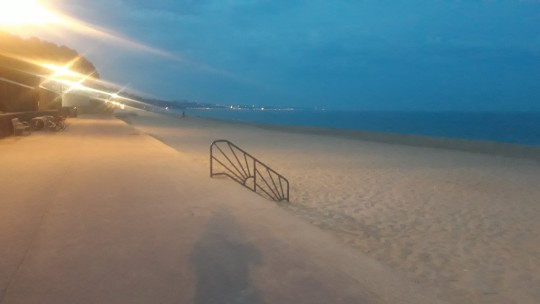
Another night, another swim. Bournemouth, UK.
#glamour#motolife#vogue#travel#adventure#luxury#wild swimming#adventure blog#beach ride#beachstyle#beachlife#beachvibes#sunset#life guards#bisexaul
1 note
·
View note
